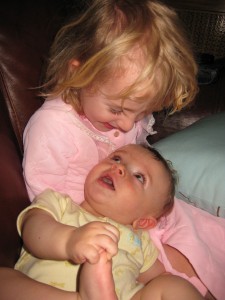The Individual Music-Centered Assessment Profile for Neurodevelopmental Disorders of Relating and Communicating (IMCAP-NDRC®) is a population specific, music-centered based music therapy assessment profiling system targeting specific areas of musical resposnsiveness pertaining to the child’s ability to engage, relate and communicate within in the context of musical play. This post includes the assessment process of Level 2, Musical (self) Regulation of the IMCAP-NDRD. It is imperative to keep in mind that the entire assessment process, which includes levels 1-6, is all withn the context of live, improvised musical interation between the child and therapist.
IMCAP-NDRC: Assessing Level II- Musical (self) Regulation
MUSICAL (SELF) REGULATION
Musical (self) regulation refers to the strategies that a child employs in order increase his/her attention to the music being processed, either receptively or interactively. This includes the child’s ability to maintain calmness while being “available” for interaction through a wide range of sensory experiences (i.e. auditory, visual, propreoception, tactile, etc.). In assessing musical (self) regulation, the therapist is observing the child’s ability to achieve a state of attention while experiencing music, either interactively and/or receptively. Within the context of musical play or receptive musical experiences, the therapist is observing the duration and the quality of the child’s ability to experience shared attention while live improvised music is being processed. Duration of musical (self) regulation is assessed by musical measures. The quality of musical (self) regulation is determined by the child’s ability to co-regulate and experience shared attention during musical interactions or receptive musical experiences. To that end, the therapist must be aware and mindful to include a wide range of musical elements and affect within the clinical improvisation, while observing the child’s ability to maintain calmness. In observing the child, the therapist will attempt to determine the following (Carpente, 2009; 2010):
- When does the child appear to get distressed?
- Where is the child’s focus?
- What may his/her body language be saying?
- Does he/she appear to be under or over stimulated?
- Does he/she have a look of fear on his/her face?
- How does the child’s gait and balance appear?
- Does the child have poor muscle tone?
- Does the child have a difficult time separating from parent and is now distressed?
- Is the child attentive to the music and/or to the therapist?
- Is the child experiencing sensory overload in terms to processing the music?
- Is the child “craving” movement?
- Walking back and forth in a line?
- Walking in circular motion?
- Jumping up and down?
- Does the child bump into things?
- Does the child have a difficult time holding mallets?
- What is the child’s preferred self-stimulatory behaviors?
- Are the child’s self-stimulatory behaviors related to the music in any way (i.e. tempo, tonality, etc.)
- What sensory needs are the self-stimulatory behaviors meeting? (I.e. visual, tactile, vestibular, etc.)
- Is the child underreactive to the music?
- What type of musical support may the child need to become “up-regulated?” (i.e. music with increased dynamics, dissonance, high register, etc.)
- What type of non-musical support may the child need to become “up-regulated?” (i.e. deep pressure, high affect through gestures, etc.)
- Is the child overreactive to the music?
- What type of musical support may the child need to become “down-regulated?” (i.e. music with decreased dynamics, low register, “soothing” vocals, etc.)
- What type of non-musical support does the child need to become “down-regulated?” (i.e. deep pressure, high affect through gestures, etc.)
- Does the child display a mixed-reactivity to the music (i.e. displays signs of both, over -and underreactivity)
- For how many consecutive measures is the child able to maintain self-regulation?
- During receptive musical experiences
- During musical interactive experiences
- Simultaneous play
- Call-and-response
Excerpt taken from the Individual Music-Centered Assessment Profile for Neurodevelopmental Dirsorders of Relating and Communicating (IMCAP-NDRC)
Copyright (c) 2009, John Carpente, PhD- All Rights Reserved


NICE!!! will try to get all students and staff to look at it
It is helpful to see these ideas well articulated (some of which have crossed my racing mind). Specifically the “down-regulated” and “up-regulated” commentary. Helpful question to discern what our clients need from us and the music.
yes, and also how we can conceptualize our client’s musically regarding their capacities (strengths) to music, as well as their “musical-differences” that impede musical interaction